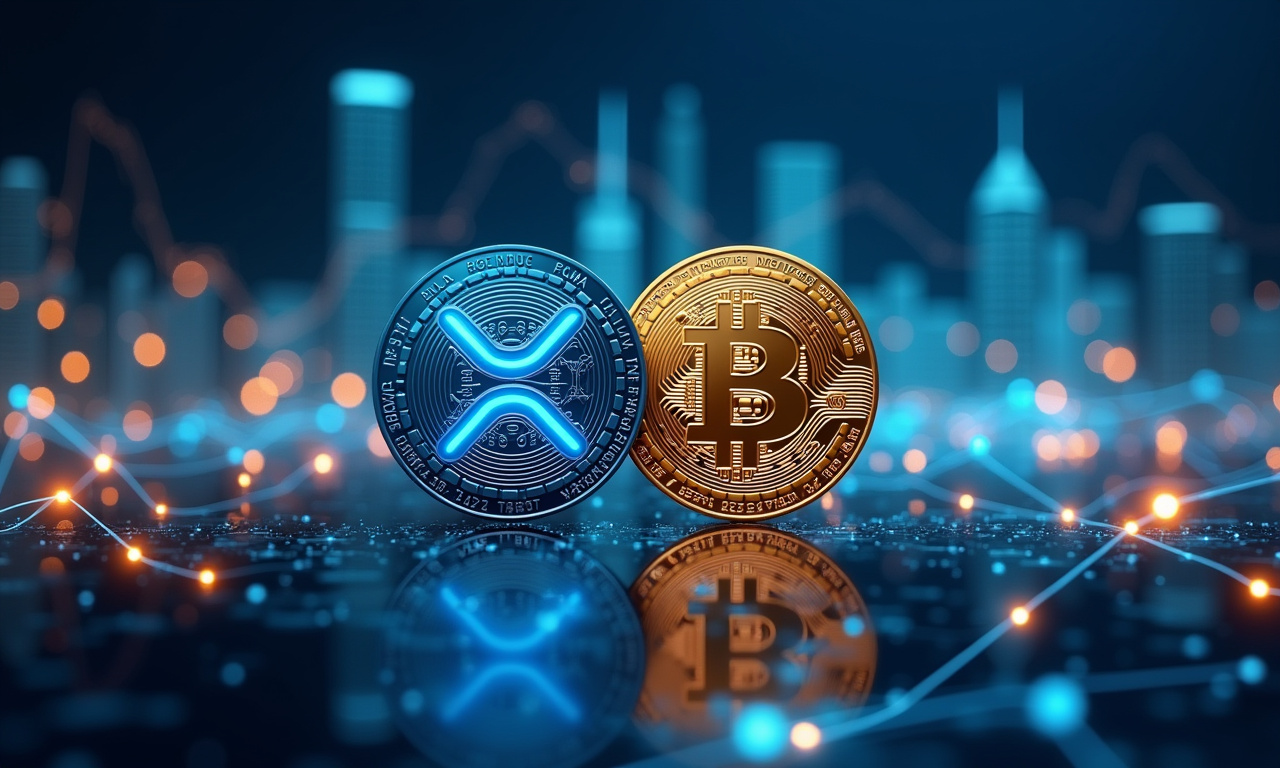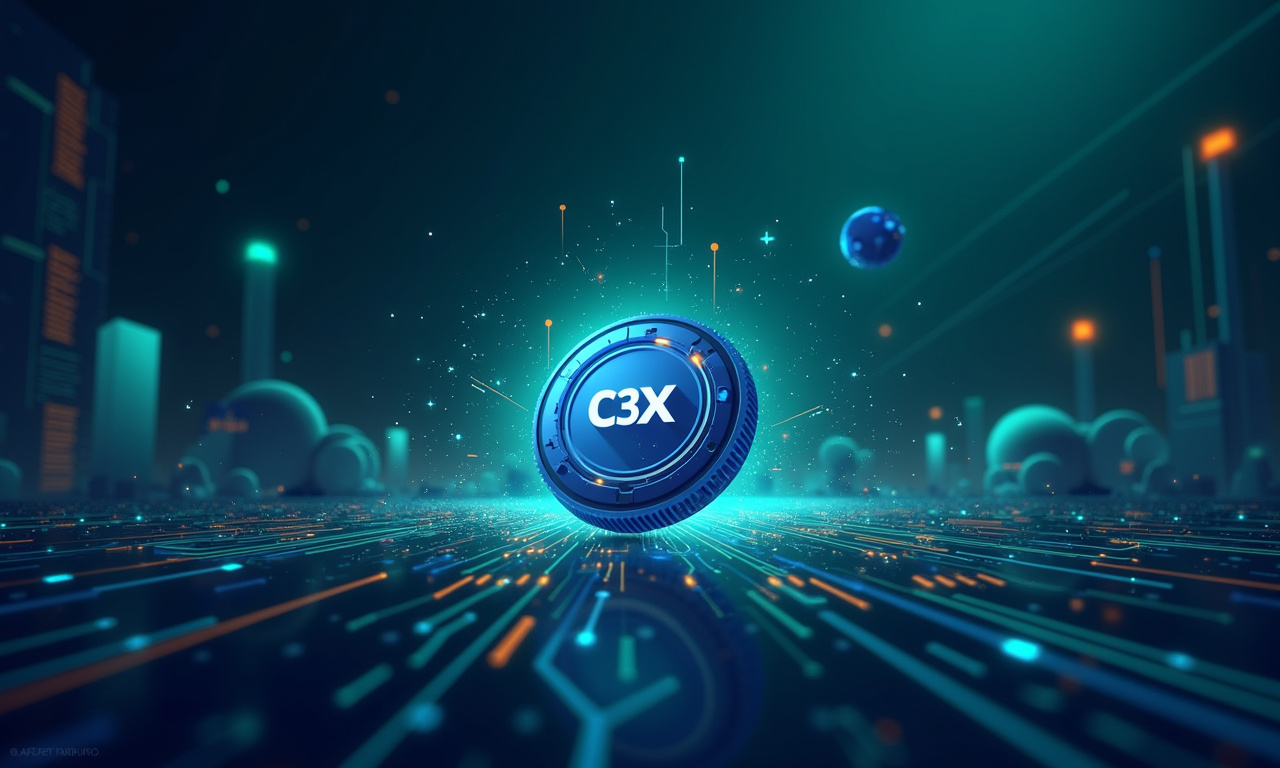WisdomTree’s recent proposal to add XRP alongside Bitcoin has created a firestorm of debate in the crypto community. Follow us at GreedyChain.com, where we make the wonky wordage easy to understand. We’ll announce why this common pairing is being contemplated as our first, dive into the potential upsides, and analyze any probable shortcomings. Here’s a look at why this dynamic pairing represents such an exciting opportunity. It would be especially attractive for institutional investors looking to dip their toes in the digital asset space.
Price Compression Indicates Potential Breakout
The price action of XRP can be a reliable indicator of where the overall market may be headed. As it stands today, XRP’s price chart has a lot of compression, a technical indicator where the price reduces its volatility over time. This usually comes before a big move, one way or the other, to the upside or downside. Traders and analysts are eagerly eyeing these patterns, hoping to catch the next big move.
Analyzing the Pre-Breakout Structure
Before any breakout, a few technical indicators begin to lead the way. These can be volume trends, moving averages, and support & resistance levels. When price is compressing and trading volume increases, it can indicate that there’s increasing interest and a potential breakout. Traders often look for a clear break above a resistance level or below a support level to confirm the direction of the breakout.
Historical Patterns and Their Significance
Historical price patterns provide valuable context. By examining previous occurrences of price compression and later breakout, analysts can derive possible upside price targets and downside risk. These patterns are not guaranteed outcomes, but they provide a structure which can help predict the behaviour in these markets and reach an informed trade.
Targeting $100: Insights from Historical Trends
Dreaming big price targets like $100 for XRP are a dime a dozen in the crypto space. These targets are often cited based on past price action and speculative projections. Ambitious targets such as these have the potential to ignite enthusiasm. In spite of the excitement, it’s important to stay cautious and determine what market conditions need to be in place for this type of boom to become a reality.
Understanding the Historical Fractal
The idea of fractals in trading is to find the same patterns repeating themselves in various degrees of magnitude. Specifically, if XRP’s previous price action demonstrates fractal patterns, analysts would be able to use those fractal patterns in order to predict future price movements. This smaller price example used to result in a 10x increase. As a result, some might guess that a similar trend overall would lead to a similarly large percentage jump.
Implications for Future Price Movements
Past patterns may provide some hints, but do not ensure certainty. To calculate a $100 target for XRP, it would take a hugely different market, broader adoption of the technology, and very positive regulatory developments. While we need to be informed by history, we shouldn’t conflate historical contexts with the current and future state of the market.
Current Market Response and Its Implications
The market's reaction to developments like WisdomTree's crypto pair suggestion is a crucial indicator of sentiment. A muted reaction, i.e., one where price does not jump massively in response, can indicate a level of uncertainty or outright skepticism from investors. Knowing what drives the market to react that way is key to measuring how much this type of news will move the needle.
Assessing the Muted Reaction
Such a muted reaction could be explained by any number of reasons. It’s possible that investors are awaiting further fleshed-out plans or more regulatory certainty. Alternatively, it may just mean the market is already saturated with like news, thus reducing the power of the announcement. Looking at trading volumes along with sentiment analysis of social media posts can offer further context that helps explain how the markets are reacting and why.
Factors Influencing Market Sentiment
Market sentiment is driven by a complex interplay of regulatory news, technological advancement and macroeconomic environment. This is why positive regulatory developments — like the recent announcement of clearer guidelines for crypto assets — can re-energize investor confidence. On the flip side, bad news—such as the threat of bans or restrictions—can quickly reverse sentiment and cause prices to fall.
The XRP Community's Anticipation
With just about every cryptocurrency, the community is largely what it’s all about. The best part of XRP is its community. They keep a watchful eye on things like Ripple, the technology behind XRP, recent court rulings and other regulatory news. Their hopes and dreams can play the most important role in shaping market conditions.
Reasons for Close Monitoring
The XRP community’s intense observation is motivated by at least three elements. Finally, most of the community members are in it for the long haul and see XRP’s utility for cross-border payments and other use cases. Importantly, they stay engaged on the regulatory front. Each of these moves can have a substantial impact on XRP’s price and adoption.
Community Sentiment and Expectations
We’ve seen how community sentiment can be an extremely powerful driver of the crypto market. Positive market sentiment creates buying pressure that increases demand, pushing prices higher. Positive market sentiment creates sell-off pressure that results in sell-offs. Being in tune with the community’s expectations and needs, as well as the concerns of the community, is essential for protecting a healthy and stable market.
Bridging Traditional Finance and DeFi
The convergence between TradFi and DeFi, or decentralized finance, has become a hot topic. Tokenization, the process of representing real-world assets on a blockchain, is one of the most important mechanisms for bridging these two worlds. That would open up new avenues for private investment and public-sector innovation.
The Role of Tokenization
Tokenization enables assets that have long been considered traditional vehicles for investment, such as stocks, bonds, and real estate, to be represented as digital tokens on a blockchain. This helps deepen liquidity, lower transaction costs, and enhance transparency. Through tokenizing a real estate property, fractional ownership is unlocked. This new approach helps make investing more available to a larger swath of investors.
Impact on Market Dynamics
When combined with the growing market for tokenization of assets, their integration between TradFi and DeFi can greatly affect market volatility. It can unlock new investment opportunities, improve market efficiency, and spur innovation. It has created unique regulatory challenges that must be dealt with to make sure our market is fair and stable.
Expert Perspectives and Keynote Highlights
Hear from industry leaders and experts, giving you new perspectives on how the crypto and blockchain technology landscape is evolving. Their unique perspectives can provide important context for investors looking to identify and capitalize on emerging trends and drive impactful investment decisions. Keynote speeches and industry-wide events like these provide ideal platforms to impart such insights.
Insights from Industry Leaders
Look no further than the latest topic du jour—crypto! From the future of Bitcoin and Ethereum to the effects of increased regulation, they analyze how blockchain tech will revolutionize countless industries. Their observations—often borne from extensive experience in these markets—can be a great source of context for thinking through the market and making prudent investments.
Key Discussions and Takeaways
Industry events are full of vibrant panel discussions and inspiring keynotes. From DeFi to NFTs to the newest regulatory action, they do it all. These important discussions lay out valuable ideas for investors. For one, they’ll be better prepared to address the latest trends and challenges, such as crypto’s volatile landscape.
The Wider Impact on Crypto Regulation
Without a doubt, regulation is going to be key in determining the future of the crypto market. Certainty and clarity of regulations leads to innovation, which invites in the institutional investors. Muddled or prohibitive regulation can suppress development and push action into the shadows.
Implications for Future Policies
The regulatory environment for crypto is fluid to say the least. Policymakers at all levels of government around the world are trying to figure out how to regulate this new asset class. The choices they take will deeply shape the long-term health of our growing crypto marketplace. In all other situations—including sales on public exchanges—the judge ruled that XRP is not a security. This decision has huge implications for how other tokens will be classified.
How Regulation Affects Market Confidence
Regulatory clarity can significantly boost market confidence. When investors have clarity over what the rules of the game are, they are more likely to invest in the market. On the other hand, some regulatory uncertainty fosters fear and uncertainty in the marketplace, resulting in widespread decreases in trading volume and increased price volatility. Donald Trump’s re-election—largely due to his continued favor with the pro-crypto crowd—has pumped fresh optimism into the market. Both bitcoin and XRP have enjoyed such substantial price increases in big part because investors expect these types of favorable regulatory policies.
To help visualize this, WisdomTree has paired XRP’s payment use case up against Bitcoin, as we believe both are Layer-1 payment assets. This unique combination offers important diversification benefits to institutional investors. An overview of challenges and counterarguments in the crypto market. With greater adoption and more defined regulations, the sector may see a more mature and less volatile environment.




